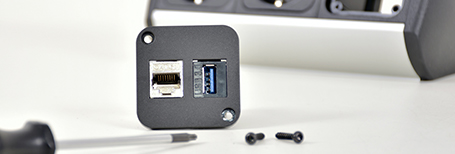
the latest directive of lift ce certification is 2014/33/eu. all lifts and safety components sold in the eu can be put on the market only when they are affixed with ce marks and accompanied with eu declaration of conformity. the ce marks can only be used after strictly complying with the inspection requirements of eu lifts directive and obtaining the conformity assessment and ce certification of the notified body of the eu. the conformity assessment process covers the whole lift and safety components.
in 2014, the eu issued the latest lifts directive 2014/33/eu and the new harmonized standards en 81-20 and en 81- 50. the new directive was implemented on april 20, 2016, replacing the old directive 95/16/ec. the new standard en 81-20/50 was enforced from september 2017, replacing the old standards en 81-1 and en 81-2. after september 2017, all lifts and their safety components need to be certified in accordance with the new harmonized standards. the eu notified body will no longer issue the old standard ce certificate. the lifts directive is the eu regulation on lift safety, and the eu authorized institutions are required to conduct eu qualification review on safety components and vertical lift products according to the lifts directive.
the lift and its safety components have truly realized global development. according to eu regulations, the installation of new lifts must be complied with 2014/33/eu lifts directive, which defines the procedures for obtaining ce marks based on health and safety requirements. in the european union and many other markets, lifts cannot be delivered without conformity assessment by the notified body. the conformity assessment process covers the whole lifts and its components, and specifies the requirements for ce conformity declaration and authorization.
the products covered by the eu lifts directive are as follows:
1.lift
1. lifts permanently installed in buildings;
2. lift is a kind of lifting equipment used at a specific height. the lift has a car that moves along a rigid guide rail with an angle greater than 15 ° to the ground plane and transports people, personnel and goods according to the intended purpose;
3. operating speed ≥ 0.15m/s.
2.scope of lift safety components
1. landing door lock device;
2. anti-elevator fall and upward overspeed protection device (such as safety gear, brake);
3. speed limiter
4. energy storage/energy consumption type buffer (spring buffer, hydraulic buffer);
5. safety devices against falls in hydraulic systems (e.g. rupture valves - only used in hydraulic lifts);
6. safety circuit with electronics (pessral);
7. unexpected car movement protection device ucmp (braking unit, control unit, monitoring unit).
q1: when applying for ce certification for the whole lift, do all safety components need ce certification?
according to the requirements of the eu lift directive, when applying for ce certification for the whole lift, all lift safety components covered by the enterprise must have ce certificates.
q2: how long is the validity period of the ce certificate of the lift and its safety components?
the eu-type examination certificate of lift and safety parts is valid for five years.
q3: what are the certification modules of ce certification for lifts and their safety components?
whole lift certification module:
module b (annex iv) module f (annex v) =eu type examination final inspection
module b (annex iv) module e (annex x) =eu type examination conformity to type based on product quality assurance
module b (annex iv) module d (annex xii) =eu type examination conformity to type based on production quality assurance
module g (annex viii) =conformity based on unit verification
module h1 (annex xi) =conformity based on full quality assurance plus design examination
safety components certification module:
module b (annex iv) module c2 (annex ix) =eu type examination conformity to type with random checking
module b (annex iv) module e (annex vi) =eu type examination conformity to type based on product quality assurance
module h (annex vi) =conformity based on full quality assurance
q4: what is the commonly used certification mode for ce certification of lift safety components? does the certificate require annual review?
the common authentication mode of lift safety components is b c2 mode; after the mode b certificate is issued, from the second year, the certificate issuing authority is required to conduct annual review on the lift safety component manufacturer every year within the validity period of the certificate.






tel: 86-400 821 5138
fax: 86-21 3327 5843
email:noa@noagroup.com